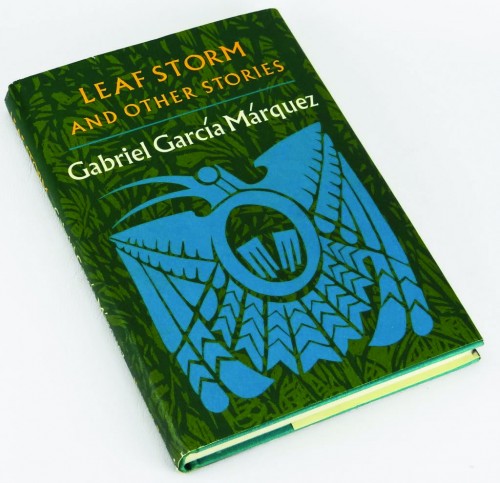8 Short Stories You Need to Read Before You Die
The first short story I ever wrote was about a family of paper hearts, written and illustrated on pieces of badly-cut construction paper, then read proudly and dramatically out loud to my first grade class during show and tell. Nearly two decades after the fact, I am a twenty-something with seventeen written and abandoned drafts […]
The first short story I ever wrote was about a family of paper hearts, written and illustrated on pieces of badly-cut construction paper, then read proudly and dramatically out loud to my first grade class during show and tell. Nearly two decades after the fact, I am a twenty-something with seventeen written and abandoned drafts of a novel with ever-changing themes and dimensions – and for all this hard work, this novel may never be finished. But short stories? They are my favorite to write, and my natural inclination. I have them by the boxful. I write them in my head in the shower, on the bus on the way to work, on the couch at my computer in between writing something else. I find them in my journals and in the margins of my old class notebooks, during Sunday evening walks with my best friend, between the fingers of the man I love. They appear in the form of a letter, a list, a single six-word sentence.
Fleeting and existing “in the moment,” short stories can appear deceptively easy to write and read. But see, a novel is a long-distance run, the kind you ease into – and as you do, you feel every twitch of every muscle, know every effect and its corresponding cause. A short story is that unpredictable, heart-pumping sprint – the kind where, once over, the impact hits you all at once, and the lasting significance reveals itself little by little in retrospect. To phrase it differently, if a novel were a lifespan, short stories are the moments within that lifespan that pack the meatiest, most telling details – and the contents within those moments can be more moving than the sum of the lifespan itself.
So in honor of May as National Short Story Month, here are the sprints I’ve loved as a writer and a reader, because ultimately they’ve each accomplished what literature ought: pack a hell of a punch.
“Why Don’t You Dance?” Raymond Carver, What We Talk About When We Talk About Love
No doubt, when speaking of subtlety and on-point minimalism, the master is Raymond Carver. In this short story (my favorite of all time) set in suburban America, an unnamed man has moved the contents of his house onto his lawn, and arranged all the furniture to mimic its placement in the individual rooms. We are not told why, and by the end, it doesn’t matter. Carver’s focal point is always the quietly teetering lives of his characters, and in this story he proves that there need be no sequence of action for a story to have a rich emotional life.
“Incarnations of Burned Children” David Foster Wallace, Oblivion
This is a story of a few minutes – the few minutes it takes for a set of parents to realize and react to what has just happened to their child. And yet, David Foster Wallace lingers on every second within those few moments, every thought that threads into another thought, every blink and breath and incremental rise of panic, turning those few minutes of real time into what feels like hours of reading time in which we are engulfed in every detail, hand to chest with our breaths caught. Slow, well-paced, and empathetically told, this is a short story whose page count is no indication of its breadth.
“Boys and Girls Like You and Me” Aryn Kyle, Boys and Girls Like You and Me
With a first-person narrator comes the question of reliability. If the point of view is subjective, how much of what you read is detail that you can trust? For a writer, the difficulty lies in how to let your readers see around your first person narrator – how to guide them past your narrator’s blind spot and into the vantage point of truth. Aryn Kyle does this beautifully in “Boys and Girls Like You and Me” where her narrator is a young, disillusioned, and misguided twenty-something (not quite unlike yours truly) who makes an unlikely – and ultimately powerful – friendship with a troubled young girl. Kyle delivers pain with nonchalance, shields hurt with humor, and in this way we learn to read between the lines until she delivers, finally, her narrator’s final and singular vulnerable moment in the story’s last line – and earns every word of it.
“Bullet in the Brain” Tobias Wolff, The Night in Question
There’s an unspoken but widely acknowledged rule when it comes to plot-twists and surprise endings: if you do it, don’t let it be the whole sum of your story. With Tobias Wolff’s “Bullet in the Brain,” the surprise isn’t that his narrator gets shot (he tells us this in the title, after all) – the surprise is the context in which he gets shot, and the shift in character that occurs as a result, after the shot’s already been fired. Much like David Foster Wallace’s “Incarnations of Burned Children,” Wolff zeroes in on a few seconds’ worth of time, and gives us a whole lifetime of insight into his cynical narrator. Where another writer would’ve placed his final punctuation after the firing of the bullet, Wolff delves deeper, and shows that even after the “surprise” in the plot, there can still be so much more.
“The Bowl” Aimee Bender, The Girl in the Flammable Skirt
Second-person narrative point-of-view is a fairly recent and uncommon practice in literature. It’s a technique that has the tendency to cause resistance for some readers who, when reading sentences like, “You are walking the dog,” are taken out of the story when they cannot help but respond with, “No, I’m not.” When used effectively, however, the second-person point-of-view can completely transport the reader into the story’s dimensions, as it quite literally makes them the protagonist or reader-character – and in doing so, asks them to emotionally connect and respond. Aimee Bender’s story is a stunning example of this, and as her reader-character receives a mysterious bowl in the mail and fantasizes about its origins and possible purposes, she creates a very tangible and open world for the unsuspecting reader to step into.
An old man turns up seemingly out of nowhere in a quiet town, feeble, speechless, injured, and with wings in tow. It sounds like a children’s fable, something adult readers may have a difficult time accepting – which is precisely why Marquez doesn’t make the fact that the man has wings the point of his story, but rather the condition of his story. With lyrical prose and fluid, dream-like imagery, Marquez creates a world that so familiar that even this strange man appearing in it soon becomes familiar as well, at it is with him that we forge the closest emotional bond to by the end.
“1-900” Richard Bausch, The Stories of Richard Bausch
Yes, in this story a seemingly normal but lonely man calls one of those numbers and ends up actually engaging in a meaningful, insightful conversation with the woman on the other end. But this has nothing to do with what makes the story most impressive. What sets Bausch’s story apart is the fact that it is told almost entirely in direct, realistic, and colloquial dialogue. There are no descriptions of the characters, no exposition, no contest. Just speech. And even more impressive is that fact that even without the dialogue tags and the details, we learn all the necessary facts anyway, and are always able to distinguish one character’s voice from the other. Quite a risk, admittedly – but for Bausch, it was one with a big pay-off.
“Initials Etched on a Dining-Room Table, Lockeport, Nova Scotia” Peter Orner, Esther Stories
In a creative writing class I took in college, I was taught to think of each story like a perfectly submerged iceberg, balancing the ice above the surface of the water with the ice beneath it. A perfect short story is one that has as much to offer on the surface, as it does in subtext. This Peter Orner story spans the length of two-and-a-half pages – but in those two and half pages we see a man and his wife, and the girl they’ve hired for help. We see their dynamic in a few deliberate and detached sentences; we understand the husband’s interest in the girl, and feel the tension as the husband and his wife discuss her initials on their table. And then, suddenly, we see a passage of time, and years later, most telling and curious of all, a narrowing of the narrative lens on the wife, and a lingering dream she can’t seem to shake. I have read this story hundreds of times; I read this story every time I need to be reminded of the power of just a few carefully chosen, purposefully arranged words. And always, always I discover something else I hadn’t seen the last time. This is the story I strive to write. This is the perfectly submerged iceberg.
Jayne Wilson writes fiction about the likes of decapitated gnomes, compulsive hoarders, and sardonic old men. She laughs pathetically at her own jokes and is generally an impish mess. She graduated from the University of California, Davis in 2010 with a degree in English-Creative Writing.
By Jayne Wilson







